SELF POWERED BUILDINGS FOR ENVIRONMENTAL SUSTAINABILITY
The self-powered buildings can be termed as autonomous buildings that are able to operate independently with great infrastructural support. Environmental sustainability is closely dependent on self-powered building in order to ensure moderation in enterprise structurization. In this study, an overall procurement of environmental sustainability will be derived for identifying the risks and it’s an easy solution. Aim of this research will base on the construction of the self-powered building with a major concern to help the people during any kind of hurdles. The research can be held readily as nature is depleting day by day in an unmanageable manner for declining the condition of the environment. In the literature review part, it can be assessed how the construction of self-powered buildings is directly or indirectly related to environmental sustainability. This part can deliver the idea about the project by considering previous theory and future procurement to develop the current condition of the research. In addition, this part can be focused on the further improvement of the project plan in order to differentiate strategies for the project. This will be a qualitative research to analyze the regular problem by developing the deductive hypothesis that can be implemented in the case to build powered-house. Moreover, empirical observations, interviews and case studies can suggest relevant results to provide suggestions that can improve environmental sustainability practice properly.
Environmental sustainability is related to the betterment of nature in order to deliver proper advantage to nature in order to use natural resources in a greater manner. The fact is under concern as global warming affects the environment in a negative way. In this research management scheme, the development of self-powered building is totally concerned with environmental sustainability. Throughout this research, it will be concerned to develop the life of the people without harming nature under any constraints. The aim of this project is to deliver proper footprint to the people by forecasting the problem with future suggestions in a relevant manner.
The aim of the study is to identify the power building project management process in order to establish environmental sustainability.
The objectives of this project management are the following:
- To analyze the effectiveness of project management on self-power building process.
- To identify the environmental sustainability techniques for the construction of power buildings.
- To identify the importance of authentic ethical project management process for ensuring a sustainable environment.
- To examine the construction process of self-powered building for environmental sustainability.
- To identify the process of autonomous building from multiple case studies.
Scholars have discovered that environmental sustainability is a potential factor to tell upon anything related to self-powered building. Various kinds of environmental challenges has been introduced to nature as a fact to build modern building with multi facilities scheme[1]. Lack of engagement with nature and concern about environmental pollution is really a potential problem for now-a-days that can be resolved as soon as possible. A project manager can help the internal and external stakeholders to concern on the self-powered building for reducing the environmental pollution as soon as possible. This actually decreases the productive index of the nature in a negative way as the responsibility of the public to the nature has been decreasing day to day. Currently, this can be a hot topic for the research as technical advancement rules over the environment. All the public are overlooking the environmental constraints on a daily basis by ensuring more facilities to self[2]. A properly structured self-powered building with green logistics can help the public as well as the environment in a proper manner to make a sustainable work with variety of functions at a time.
The neoclassical sustainability of the growth
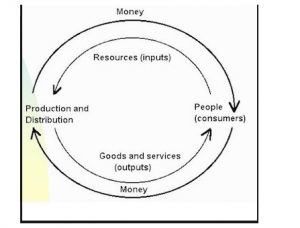
Figure 1: neoclassical sustainability of the growth
Sustainable development growth maintains the capacity of economic society for getting the same level of wellness for the future generation concerning the present generation. The neoclassical growth theory of sustainability argues that the technology advancements made an effect on the economy and the growth can not be possible without this up gradation in the technologies. Human labor, investment capital and technological advancements are the key factors of this neoclassical sustainability growth[3]. The theory behind neoclassical economics is primarily focused on supply and the demands of a product in the market. The neoclassical theory also deals with the architecture of a building, but in present days the labors are not concerned about environmental sustainability and that are why the pollution rate is going high nowadays. Investment only in building sustainability without environmental concern can harm the environment badly, apart from that technological advancements can also harm the environment[4]. For maximizing the environment sustainability the neoclassical sustainability growth theory can be used.
Transformation, Flow and value generation models
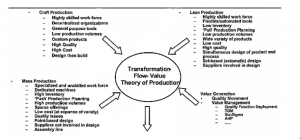
Figure 2: Transformation, Flow and value generation models
Transformation, flow and value generation model is used to identify the three components such as transformation oriented, material-oriented and the last one is customer-oriented[5]. This theory deals with the resources of transportation, value and the flow of materials and people. A self-powered building for environmental sustainability directly related to transformation, flow and value generation model. For making a self-powered building flow of cash and the laborers should be high and the values of the materials are very high to make it environmentally sustained[6]. Moreover, there have to be trained laborers who can make an environmentally sustainable building. A good amount of money should be invested by the investors to train the laborers for developing the construction of that environmentally sustained building. This theory will be helpful because it is merged with the concept of a green building. As the building is self-powered that is why the material cost is very high but concerning future power generation, it will give benefit at that time. The investor can use the green logistics system which is a transportation way without causing pollution. This theory will give the environmental benefit and protects from environmental pollution. The cash flow and the labor flow for making this type of building need to be constant as the building is a unique type of building which can take the construction line on a different level. The normal type of construction process can cause a high level of pollution, but this type of construction will not make any pollution rather it will help the environment for not increasing pollution.
Research Question
How project management on self-powered buildings can help on environmental sustainability?
The independent and dependent variables are project management on self-powered buildings and environmental sustainability respectively. It is sure that a minimum modification in the project management scheme can ensure both a negative and positive impact on the environmental sustainability of the project.
Purpose
Research project on construction of self-powered building for environmental sustainability will aim to accomplish the understanding of project management on the basis of environmental sustainability. The criteria of this management scheme will be followed as per the structure given below:
- Reviewing of existing literature to understand the environmental sustainability principle for the case of self-powered building construction
- Adoption of multiple case studies to build an autonomous building
- Elaboration of the barriers to modify the management research data that can help to make the project more relevant
The research management of self-powered building construction will follow the qualitative research method with a deductive research approach in a descriptive design. Semi-structured interview technique can be followed to analyze empirical case studies by diminishing all limitations and barriers for environmental development.
Research Type
Self-powered building project can follow an exploratory study to determine the knowledge about project management with environmental sustainability. This research type will be helpful to deliver knowledge about the powered house project through open ended question-answer session for calculating environmental sustainability. Through descriptive research, it will be helpful to increase the knowledge on this topic for analyzing cause and effect in a proper manner[7]. Interrelationship between project management on self-powered building and environmental sustainability will be developed by following this research type in an increased manner[8].
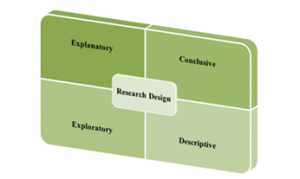
Figure 3: Research Design
(Source: Created by researcher)
Epistemology
Epistemology is basically the research philosophy that is based on the determination of acceptable and rejected purposes of project management. There are four types of research philosophy such as positivism, pragmatism, realism and interpretism[9]. This research management project will follow the positivist philosophy as the base of the research is environmental sustainability. For this purpose, a scientific research philosophy will be helpful to understand the project via a good interpretation. Pragmatism will not be followed as only the beat research methods have been considered for this case. Realism will not be followed as this research is a group work and interpretism will not be considered as the basis of this philosophy will be totally based on theoretical overview[10]. As the consideration of the environmental sustainability is the forefront of this research, it is the duty of the project manager to undertake it on the basis of different individuals with proper process and professional ethics. It will be the duty of the project manager to understand the purpose of environmental sustainability in case to build powered-house for leading the professional skill in a proper manner. This epistemology will assure decision and action of project manager in order to concern about environmental sustainability through implementing self-powered building in the urban area.
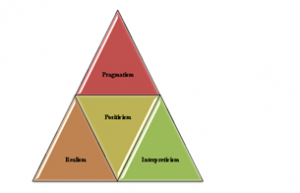
Figure 4: Research Philosophy
(Source: Created by researcher)
Data collection method
Basically, the data collection method can be delivered by primary and secondary method in order to evaluate the problems in a proper manner. A primary data collection method will be followed in this research management to make a link between project management and environmental sustainability in a greater way. A proper interview session can be helpful to identify the actual problem by communicating with people in a proper manner. A semi-structured primary data collection method will be fulfilled to detect individual information through ideas and opinions of each person[11]. The secondary data collection method will not be followed in this case as the data can be vague to know about the environmental sustainability to decide the actual problem related to self-powered building.
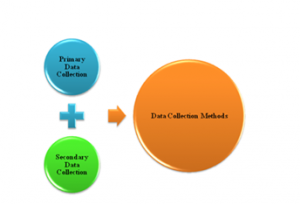
Figure 5: Data Collection Method
(Source: Created by researcher)
Sampling method will be followed in this case a clustered one to detect the target population who are actually the local people. Interview session to them will be helpful to know the facilities and disadvantages of the self-powered building in an efficient way. In addition, this kind of data collection will be helpful to sort out the people directly or indirectly related to this project with a greater involvement.
Data analysis method
Data analysis method is an ethical overview to understand the type of data under scientific consideration to know about qualitative and quantitative data collection process. This research will follow the qualitative data analysis scheme with the help of thematic analysis and graphical consideration. This kind of data analysis methodology will be helpful to find out actual trends and issues for environmental risk in a greater order[12].

Figure 6: Data analysis Method
(Source: Created by researcher)
Reliability and correlation analysis will be calculated for the developmental of the research by delivering the data through the help of statistics. In this study, MS excel will be used as the sample size will be small for technical analysis that can help to represent data in a sufficient way. Graphs that will be generated can help to develop statistical analysis easily in case of survey and analyzation of thematic analysis will be easy through interview sessions. The aspect of validity and reliability will be considered as a statistical tool to develop the right conclusion of the study in better efficiency[13]. Moreover, the information will be included in a proper manner in order to consider all the ethics of this research with greater viability.
Ethical Consideration
The purpose of the research is totally connected with ethical considerations in terms of access risk of the correct consent of the data collector and the data population. It is very important for any of the research to be prepared with its perfect ethical value. The name of the participants cannot be mentioned or included in the study to develop the proper study on the basis of risk behavior of the process. In this process of the research all the information are confidential and must be kept totally hidden to maintain the ethics in a sensitive manner. This type of sociological research will not be able to harm any of the people and will be maintaining professional competence with the visibility in a greater rate[14]. Moreover, this research will provide some voluntary approach to the target sample without providing avoidance to the research respondents. The limitation of the study has a major shortcoming which can affect the study and the purposes of diminishing all the relevant types of results in a negative manner
In this study it can be seen that the preparation of the buildings are not in the proper environmental friendly which is trying to harm the nature. Now a days in the preparation of new infrastructure its not being focused that the environment is being harmed. So, it must be taken a reminder that if the environment is being destroyed then it would be very difficult for human beings to survive. The process of green logistics should be used so that the environment may face less amount of damage from the preparation of the new infrastructure. There should be a balance between the environment and human beings so that destructive moves must not harm anyone. Hence eco-friendly infrastructures must be prepared for the betterment of the environment.
Personal Reflection
Project on self-powered buildings for environmental sustainability is a fruitful one to deliver proper backbone to nature in case to rule over pollution. I think that the project can be an efficient one to solve the common problems of the people due to natural constraints. This study is completely focused on the analysis of current disaster and procession of green building to help the public in a proper way. As per my view, this project management topic is a reliable one to identify environmental quality with healthy commitments with natural resources. A deductive research approach is really an effective one to find out the end line problem with both via theoretical and practical manner. In this descriptive research philosophy, a proper design has been delivered to understand the underlying problem in a better way. Cause of the problems for research is deliberately explained in this research management plan to understand the gap in a better way. On the other hand, this research management scheme is an efficient one for me as the qualitative method can help to know the basic problem of the related person in a greater way through interview session. Moreover, I think that project management on self-powered buildings can be a knowledgeable one to understand how environmental sustainability can be maintained during the process.
References
Ayres, R.U., 2017. Gaps in Mainstream Economics: Energy, Growth, and Sustainability. In Green Economy Reader (pp. 39-53). Springer, Cham.
Bloemmen, M., Bobulescu, R., Le, N.T. and Vitari, C., 2015. Microeconomic degrowth: the case of community supported agriculture. Ecological Economics, 112, pp.110-115.
Etikan, I., and Bala, K., 2017. Sampling and sampling methods. Biometrics & Biostatistics International Journal, 5(6), 00149.
Etikan, I., Musa, S. A., and Alkassim, R. S., 2016. Comparison of convenience sampling and purposive sampling. American journal of theoretical and applied statistics, 5(1), 1-4.
Wilson, V., 2016. Research methods: sampling. Evidence Based Library and Information Practice, 11(1 (S)), 69-71.
Fisher, J., Sales, A., Carlson, L., and Steele, J., 2016. A comparison of the motivational factors between CrossFit participants and other resistance exercise modalities: a pilot study. J Sports Med Phys Fitness, 9, 1227-34.
Khan, A.A., Shahzad, A., Hayat, I. and Miah, M.S., 2016. Recovery of flow conditions for optimum electricity generation through micro hydro turbines. Renewable energy, 96, pp.940-948.
Ludvigsson, J. F., Almqvist, C., Bonamy, A. K. E., Ljung, R., Michaëlsson, K., Neovius, M., and Ye, W., 2016. Registers of the Swedish total population and their use in medical research. European journal of epidemiology, 31(2), 125-136.
Mayer, I., 2015. Qualitative research with a focus on qualitative data analysis. International Journal of Sales, Retailing & Marketing, 4(9), 53-67
Piecyk, M., Browne, M., Whiteing, A. and McKinnon, A. eds., 2015. Green logistics: Improving the environmental sustainability of logistics. Kogan Page Publishers.
Reddy, P.B., Reddy, A., Reddy, V.V., Sarath, C.S. and Manikandan, K., 2019. Real-time monitoring system (websocket-based) for remote intelligent buildings.
Söderbaum, P., Dereniowska, M. and Spangenberg, J.H., 2016. Sustainability economics and missing points in the sustainability dialogue. Int. J. Sustainable Development, 19(2), pp.101-112.
Umar, G.K., Yusuf, D.A. and Mustapha, A., 2019. Theory and Design for the Contemporary Residential Buildings: A Case Study of Kano Metropolis, North-western part of Nigeria.
Yang, F., Chen, X. and Wen, Z., 2017. Wind Energy Utilization of Modern Urban Buildings. DEStech Transactions on Engineering and Technology Research, (icia).
[1] Reddy, P.B., Reddy, A., Reddy, V.V., Sarath, C.S. and Manikandan, K., 2019. Real-time monitoring system (websocket-based) for remote intelligent buildings.
[2] Piecyk, M., Browne, M., Whiteing, A. and McKinnon, A. eds., 2015. Green logistics: Improving the environmental sustainability of logistics. Kogan Page Publishers.
[3] Khan, A.A., Shahzad, A., Hayat, I. and Miah, M.S., 2016. Recovery of flow conditions for optimum electricity generation through micro hydro turbines. Renewable energy, 96, pp.940-948.
[4] Ayres, R.U., 2017. Gaps in Mainstream Economics: Energy, Growth, and Sustainability. In Green Economy Reader (pp. 39-53). Springer, Cham.
[5] Söderbaum, P., Dereniowska, M. and Spangenberg, J.H., 2016. Sustainability economics and missing points in the sustainability dialogue. Int. J. Sustainable Development, 19(2), pp.101-112.
[6] Bloemmen, M., Bobulescu, R., Le, N.T. and Vitari, C., 2015. Microeconomic degrowth: the case of community supported agriculture. Ecological Economics, 112, pp.110-115.
[7] Etikan, I., and Bala, K., 2017. Sampling and sampling methods. Biometrics & Biostatistics International Journal, 5(6), 00149.
[8] Ludvigsson, J. F., Almqvist, C., Bonamy, A. K. E., Ljung, R., Michaëlsson, K., Neovius, M., and Ye, W., 2016. Registers of the Swedish total population and their use in medical research. European journal of epidemiology, 31(2), 125-136.
[9] Etikan, I., and Bala, K., 2017. Sampling and sampling methods. Biometrics & Biostatistics International Journal, 5(6), 00149.
[10] Etikan, I., Musa, S. A., and Alkassim, R. S., 2016. Comparison of convenience sampling and purposive sampling. American journal of theoretical and applied statistics, 5(1), 1-4.
[11] Wilson, V., 2016. Research methods: sampling. Evidence Based Library and Information Practice, 11(1 (S)), 69-71.
[12] Fisher, J., Sales, A., Carlson, L., and Steele, J., 2016. A comparison of the motivational factors between CrossFit participants and other resistance exercise modalities: a pilot study. J Sports Med Phys Fitness, 9, 1227-34
[13] Fisher, J., Sales, A., Carlson, L., and Steele, J., 2016. A comparison of the motivational factors between CrossFit participants and other resistance exercise modalities: a pilot study. J Sports Med Phys Fitness, 9, 1227-34.
[14] Reddy, P.B., Reddy, A., Reddy, V.V., Sarath, C.S. and Manikandan, K., 2019. Real-time monitoring system (websocket-based) for remote intelligent buildings.



Hi! Would you mind if I share your blog with my facebook group? There’s a lot of people that I think would really appreciate your content. Please let me know. Thank you
https://suba.me/